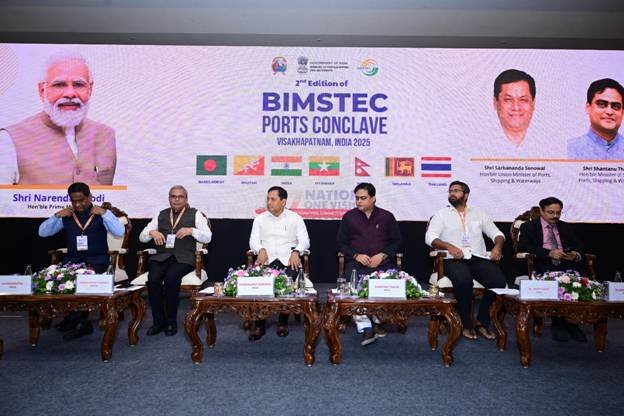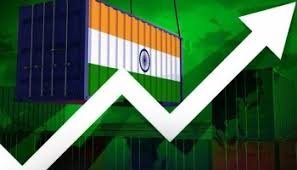✍️ Economy India Bureau
📍 New Delhi [Economy India] : India views the recently advanced BIMSTEC maritime cooperation agreement as a strategic blueprint to transform the Bay of Bengal into a major global hub for trade and tourism, Union Minister Sarbananda Sonowal said on Monday.
Speaking in New Delhi, the Minister for Ports, Shipping, and Waterways highlighted the government’s long-term vision to unlock the maritime and economic potential of the Bay of Bengal region — a zone connecting South Asia and Southeast Asia, home to nearly 1.6 billion people.
“The Bay of Bengal holds tremendous potential for regional integration, blue economy development, and international trade. The BIMSTEC maritime agreement is the foundation upon which we will build sustainable shipping corridors,” Sonowal said, according to an official statement.
🌐 BIMSTEC as a Strategic Maritime Gateway
The Bay of Bengal Initiative for Multi-Sectoral Technical and Economic Cooperation (BIMSTEC) includes Bangladesh, Bhutan, India, Myanmar, Nepal, Sri Lanka, and Thailand. The maritime transport agreement under BIMSTEC aims to:
- Promote seamless port connectivity and multimodal logistics
- Enable eco-friendly maritime trade routes
- Strengthen intra-regional trade and reduce dependence on global chokepoints
Sonowal emphasized that India’s policy aligns with Act East and Sagarmala strategies — focusing on port-led development and blue economy integration.
🏗️ Industrial Corridor Development & Feasibility Studies
As part of its roadmap, the Indian government will soon initiate joint feasibility studies for the development of industrial zones near key ports. These corridors will cater to:
- Export-oriented manufacturing
- Marine and coastal logistics
- Shipbuilding and allied services
- Green energy and maritime tourism
Such development is expected to create new investment avenues, jobs, and trade linkages between BIMSTEC member states and international markets.
📊 Why the Bay of Bengal Matters for India’s Economy
- Strategic Trade Location: 25% of global maritime trade passes through the Bay of Bengal.
- Untapped Blue Economy: Estimated potential of $500 billion+ in fisheries, energy, tourism, and shipping.
- Geopolitical Significance: Acts as a buffer and connector between the Indian Ocean and Southeast Asia.
- India’s Port Growth Engine: Ports like Paradip, Kolkata, and Visakhapatnam are primed to play leadership roles.
🧭 Conclusion: India Eyes Maritime Leadership in the Indo-Pacific
By leveraging BIMSTEC cooperation and maritime connectivity, India aims to position the Bay of Bengal not just as a regional sea, but as a key gateway in the Indo-Pacific strategy. The BIMSTEC agreement is not merely diplomatic — it is a concrete step toward infrastructure, investment, and inclusive economic growth.
As India leads from the front in regional cooperation, the Bay of Bengal could emerge as the 21st-century maritime Silk Route, connecting East with West through sustainability, speed, and strategic synergy.
[Economy India ]












